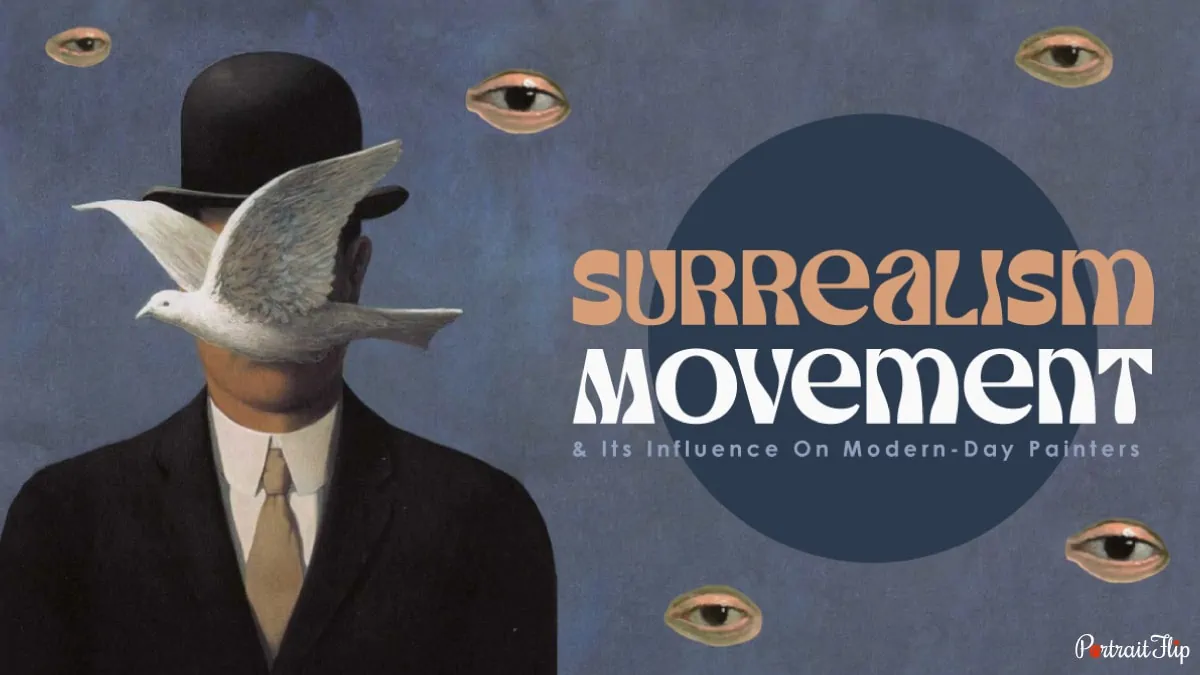In a mood for a short story?
Andre Breton was a Dadaist and a mad follower of Sigmund Freud’s work in psychoanalysis.
According to André, rational thoughts have their own significance in the art world.
However, change is inevitable when one goes beyond its limits.
His keen interest in Freud’s theories and works inspired him to publish the “Manifesto of Surrealism.”
Surrealism fascinated some famous painters like Pablo Picasso, Giorgio de Chirico, Marcel Duchamp, and Francis Picabia.
Over the years, the Surrealism artistic movement, which was developed in Europe in the aftermath of World War I, also flourished in other parts of the world.
Not only did it fascinate some famous cubist artists, but it also impacted many 20th-century notable artists.
Today, we’ll learn more about this uncanny movement—its history, characteristics, techniques, and influence on the 21st century. Shall we?
Table of contents
What is Surrealism Artistic Movement?
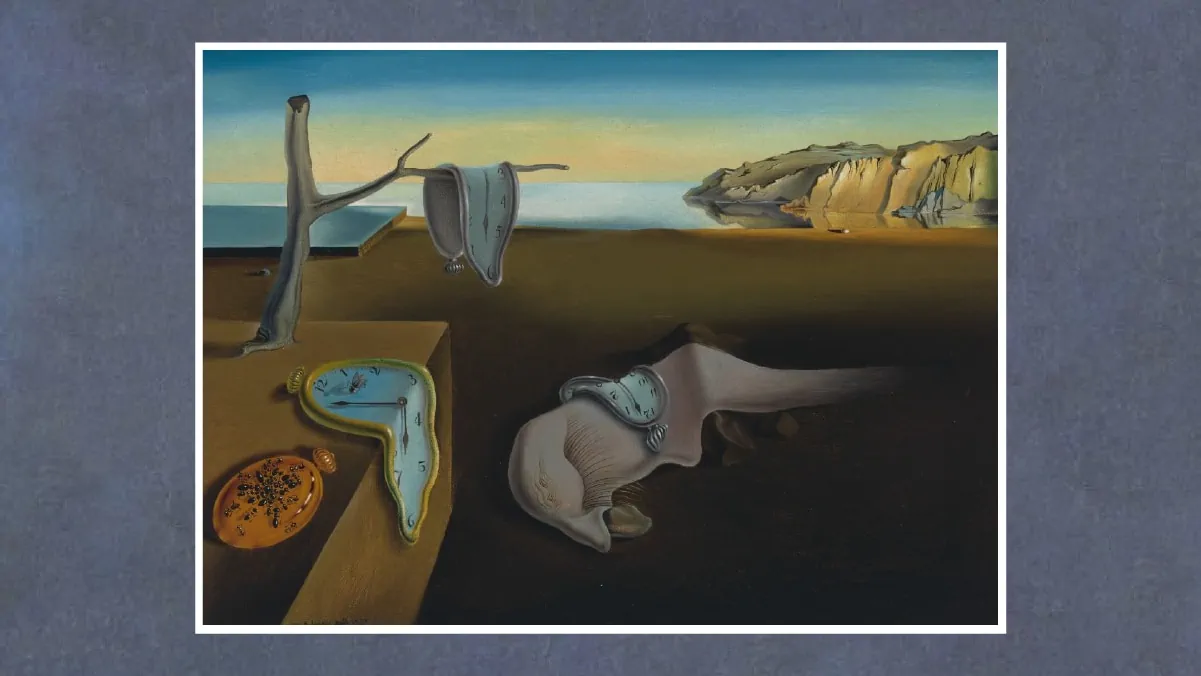
Surrealism is a famous 20th-century avant-garde movement.
The movement was renowned for embracing ideas, thoughts, and irrational methods of producing art.
This artistic and literary movement was founded by none other than Andre Breton, in 1920.
Surrealism was a result of the merger of its predecessor, Dada, and Cubism.
Its founder, Breton, was well-versed in the psychoanalytic writings of Sigmund Freud, who was also a Marxist.
Their irrational beliefs have their origins in a decade-late movement known as Dadaism.
This movement led to the birth of many iconic artists of dadaism.
History of Surrealism Artistic Movement
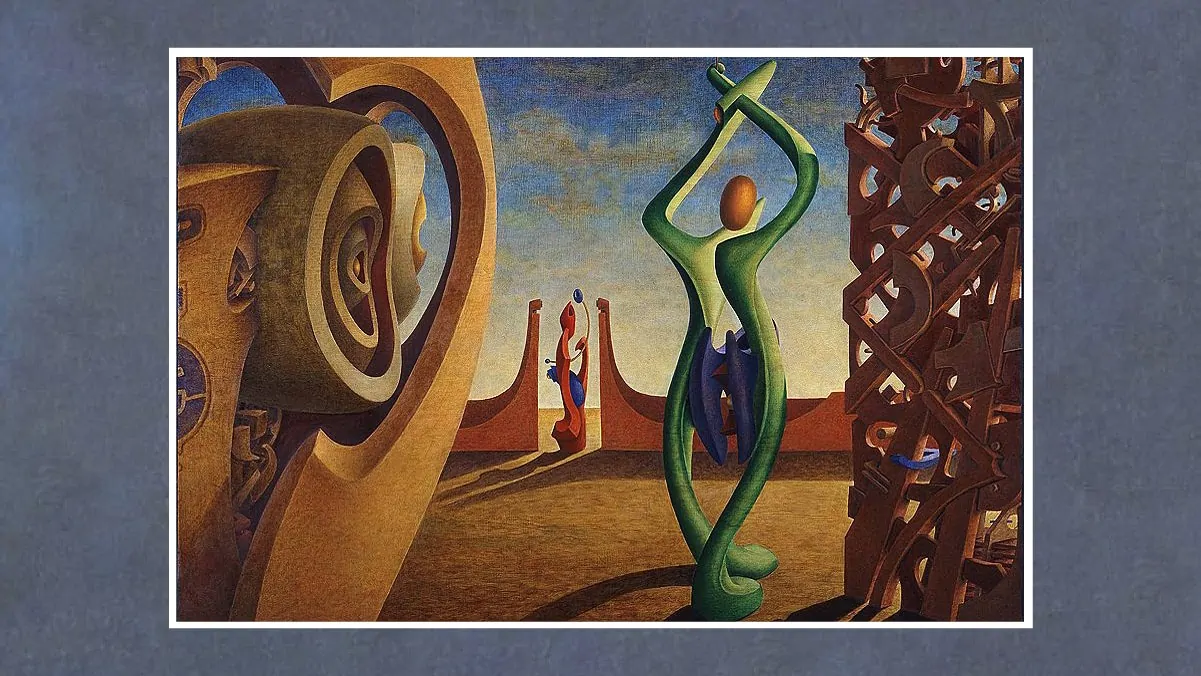
The formation of the Surrealism artistic movement in 1920 changed the perceptions of art practitioners and appreciators.
World War I resulted in the scattering of painters and writers based in Paris.
Many joined the Dada movement, which ended in 1922.
The reason the artists’ thoughts were affected was the aftermath of World War I.
They would think that rational thoughts and traditional mindsets led to the destruction of the world.
Due to this, the Dadaists went into full swing with strong protests against the anti-art gatherings, performances, and writings.
During the war, André discovered Freud’s study on psychoanalytic methods. Which fascinated him in a huge way.
He began devoting his time to understanding the concept of unconsciousness, which would aid him in creating eccentric art forms.
After reading more about Freud’s work, he came back to Paris and joined Dada.
Together with Louis Aragon and Philippe Soupault, he worked on several literary works.
After rigorously studying the techniques of automatism, André and Soupault published “The Magnetic Field.”
By October 1924, two separate Surrealist communities had been formed.
Each of them claimed to be the successor of Appolinaire, who first coined the term “Surrealism” in 1917.
The first group was led by Yvan Goll, and the other was by Andre himself.
However, Andre’s beliefs in automatism as a better way of societal change gained significant support.
Andre’s group members began to increase with prominent writers and painters.
Among them were well-known artists such as André Masson, Joan Miró, Marcel Duchamp, and others.
Due to two diametrically opposed ideologies, methods, and rivalries, two surrealist groups were formed.
Surrealist Manifestos
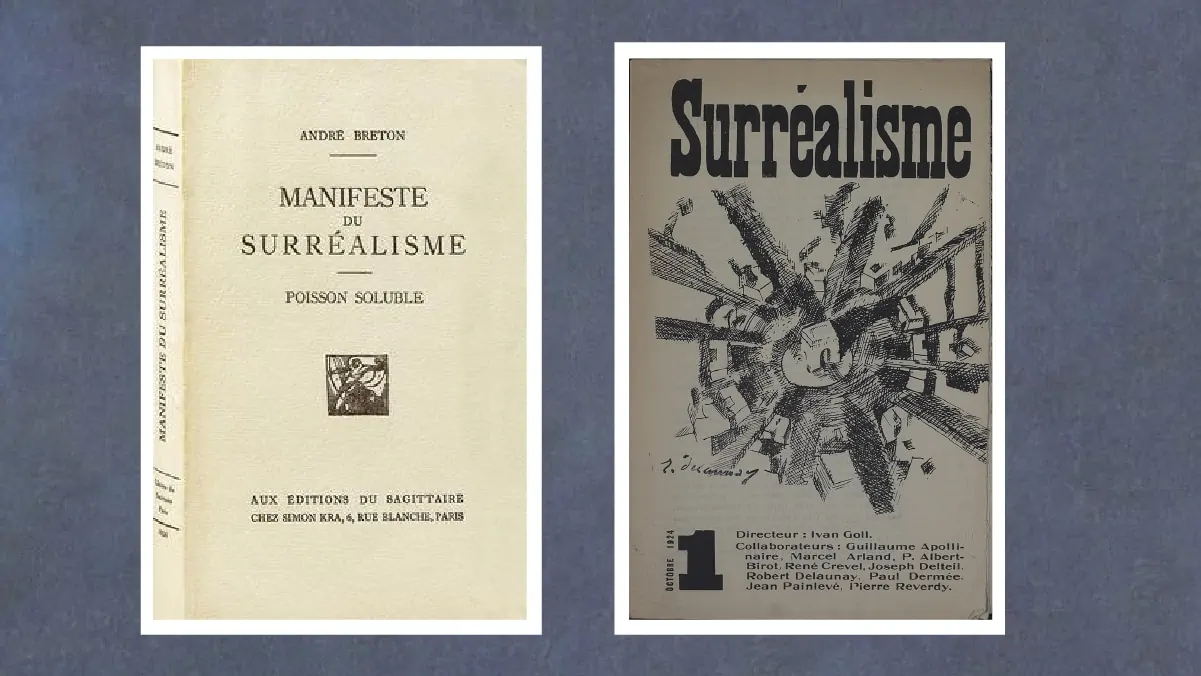
Breton’s manifesto was written and published in 1924.
His texts included a myriad of examples of the application of surrealism.
You’d see a suggestion for creating an entirely new reality with the merger of the subconscious and consciousness.
Although the subject was intense and controversial, his writings were quite humorous.
Andre’s text also asserted that surrealists never follow specific or conventional patterns and plans.
In 1924, two weeks prior to Andre’s manifesto, Yvan Goll published his manifesto.
Despite presenting the manifesto two weeks earlier, he wasn’t able to garner people’s attention.
At one point, the competition between them became so intense that they literally had a fight at the Comedie des Champs-Elysees.
However, the verdict came in support of André because of its growing numbers and popularity.
Since then, art lovers have gone through tons of ups and downs and heard a wide range of viewpoints and accounts from different surrealists.
Surrealist Techniques
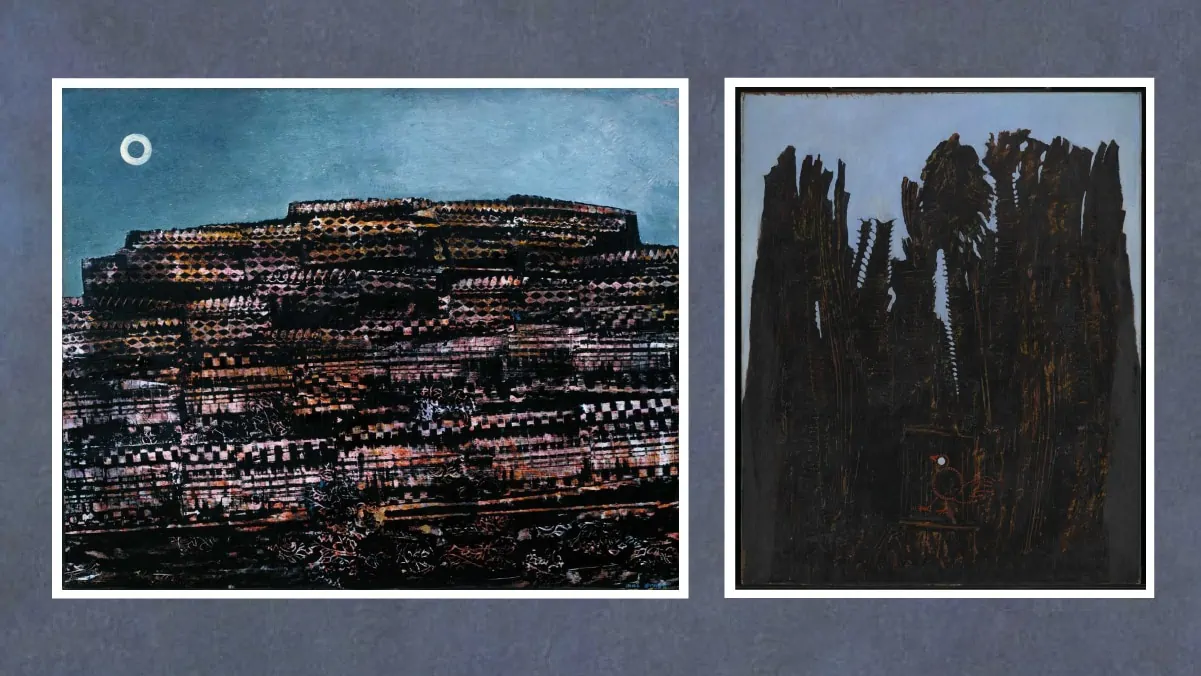
The most common Surrealist techniques were frottage and grattage.
Developed by Ernst to provide incomplete visuals that the viewer was expected to finish.
But what exactly is the frottage technique?
“Frottage,” a French word meaning “rubbing,” is a technique for artistic creation that entails using a pencil or other sketching tool to create the texture of a rough surface.
Grattage is a technique that involves rubbing white paper or canvas over a gritty surface while using a crayon.
Apart from that, there were other techniques that included automatic drawing, a spontaneous, uncensored recording of chaotic images, and exquisite corpses.
Suggested Read: Paintings by Mark Rothko
Impact Of World War II On Surrealism Artistic Movement
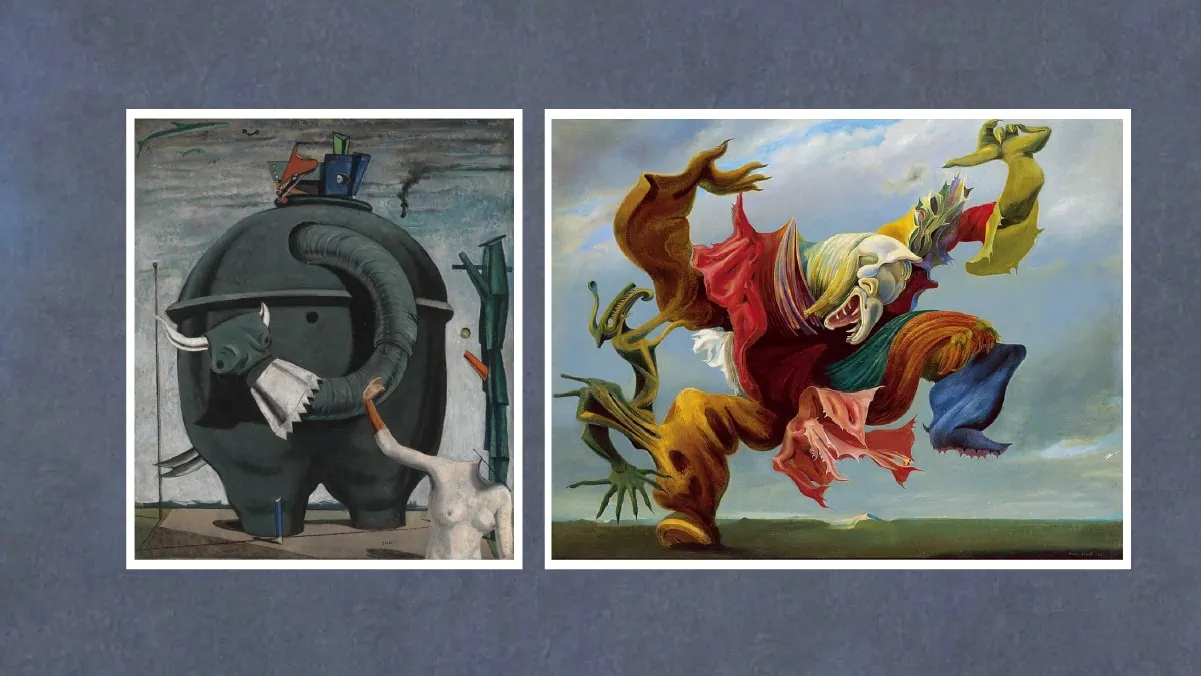
During World War II, humanity was a joke to many powerful people.
Influential nations were mercilessly killing and bombing innocent civilians without understanding the consequences.
The world witnessed unbelievable bloodshed.
And the movements throughout the twentieth century have experienced drastic shifts.
Many Surrealist painters expressed people’s grief, sorrow, pain, and utter bewilderment in their work.
Compared to World War I, the Second War pushed the Surrealists into a more horrifying and menacing state.
There was a discussion going on among the artist community that the atrocities that happened due to World War II would result in peace.
However, Dada’s leader at the time, Tristan Tzara, opposed the thought and openly condemned those who followed the heinous ideology.
The aftermath of World War II made the Surrealists draw petrifying and spine-chilling artworks.
Here are some great examples:
1. Marion Adnam’s Aftermath (1946)
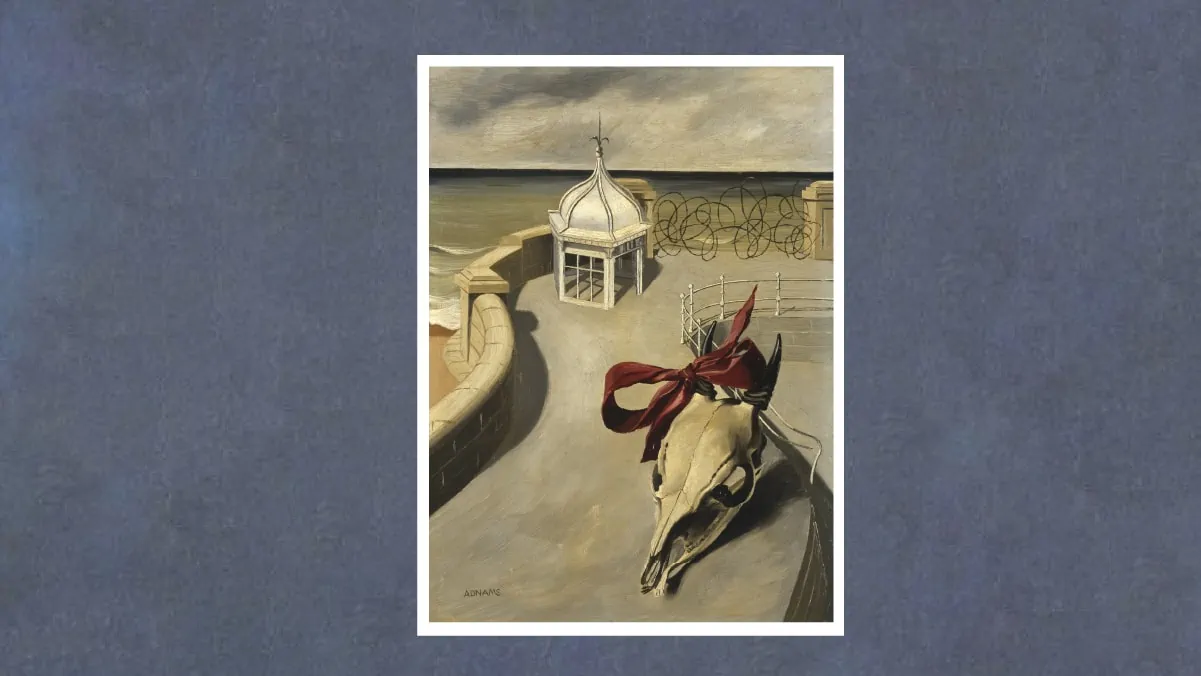
It alludes to the destruction caused by World War II; Marion’s Aftermath was influenced by one of Dali’s painting styles.
There’s a red ribbon flowing on the right, which is tied to an animal skull in the foreground.
This animal skull gives the painting a hint of vanitas, making it one of the most famous paintings of still life.
The barbed wire in the background displays the ideology of restriction.
In the far background, there’s the sea, which depicts the freedom of British shores.
Out of all the Surrealist paintings, which were quite uncanny and weird, this was contrary to them, neither negative nor too uncanny in nature.
All it tries to show is a better future after abundant pain and suffering.
2. Salvador Dali’s Metamorphosis of Narcissus (1937)
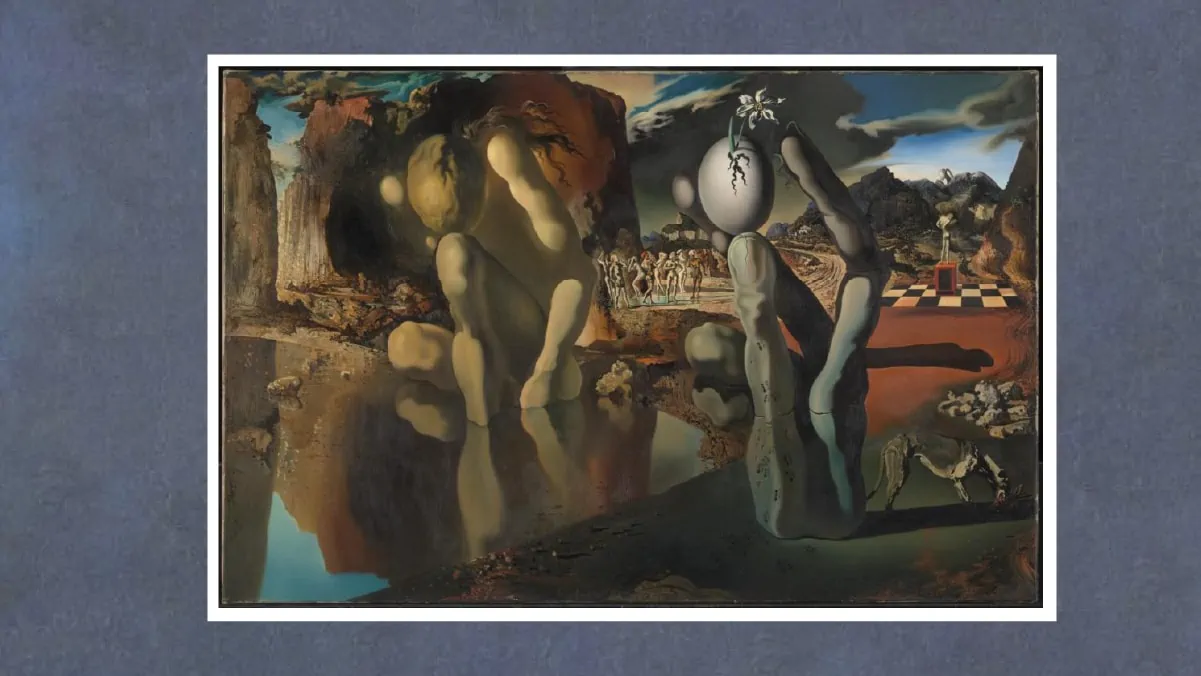
It’s Narcissus, on the left, crouched by a lake; his forehead resting on his left knee.
Whereas, on the right, it’s germinating; a stone hand clutching the egg, displaying a similar portrayal on the right.
Dali hinted at the World War II effect—where malnutrition and hunger spread across the world.
With intense and vibrant red shades, he meticulously symbolized bloodshed and warfare.
Also Read: Famous artworks by Salvador Dali
3. Max Ernst – l’occhio del silenzio (1943-44)
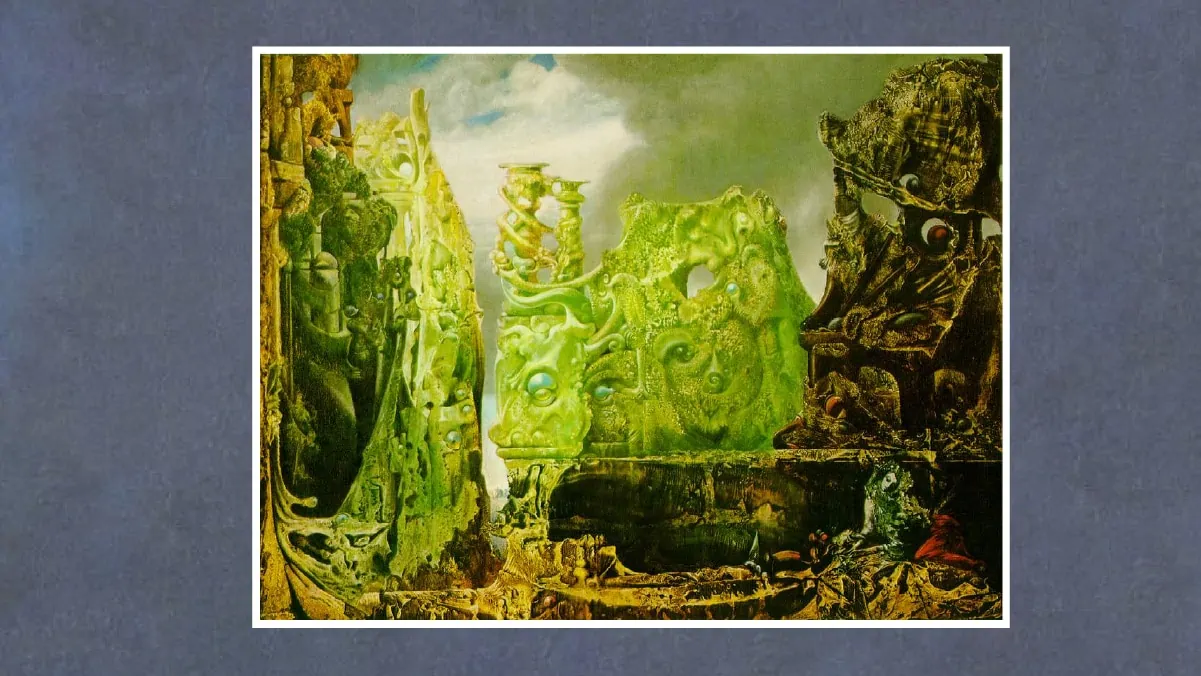
The popular technique of surrealism, ‘frottage‘, was used to paint it.
Max’s artwork featured humans and creatures. Wherein he meticulously created humans in a state of decay.
The message was subtle.
The dark clouds carried an ominous message, which would terrify viewers when observed from different angles.
The impact of the Surrealism artistic movement was immeasurable and unbelievable.
Surrealist artists would believe more in the subconscious mind to create art forms; mostly with the intent to express some of the deepest meanings and emotions.
Surrealism’s Influence on 21st Century

Despite its association with the arts, it also impacted other realms.
Not only does it refer to Breton’s Surrealist principles, but also to countless creative acts.
That mainly liberates the imagination.
Whatever happened in the second half of the twentieth century was either directly or indirectly influenced by Surrealism.
That era was regarded as the Postmodern Era.
The world’s post-movement began appreciating art on a subliminal as well as literary level.
Today, surrealism is a well-known and still-expanding art genre.
The Surrealist movement offers more flexibility in terms of expressing themselves on canvas.
Which is why it’s simple for aspiring or proficient artists to demonstrate their originality.
Hello, readers!
Thank you for reading this article.
I hope you found this piece informative and valuable.
Surrealism artistic movement, an immensely popular 20th-century movement, which has its root in Dada and other Freud theories are often talked about among 21st-century painters.
Its techniques, styles, and characteristics were so beyond one’s understanding that it rebuild aspiring artists’ perspectives.
I’ve covered almost everything about which helped in its development and sustainability.
However, if you believe I missed something or that I should have included more pertinent information, please let me know in the comments area.
Talking about handmade paintings, we also produce replicas of renowned paintings to give an artistic look to our art lovers’ abodes.
Do you want a replica of your favorite artwork?
Frequently Asked Questions
Surrealism is a famous 20th-century avant-garde movement and was known for embracing ideas, thoughts, and irrational methods of producing art.
The Surrealism movement was introduced in the late 1910s.
The most common Surrealist techniques were frottage and grattage.



